Phaseolus coccineus, known as runner bean, is a plant in the legume or Fabaceae family.
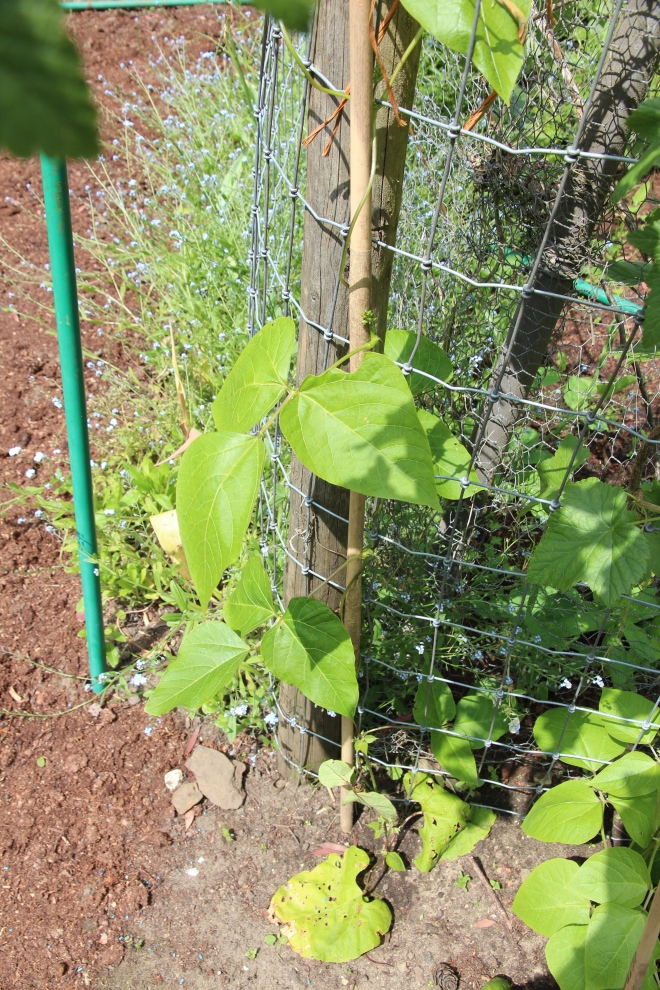
This species originated from the high altitude regions of Central America. From there it made its way to Spain then eventually spread throughout Europe. The runner bean is believed to have first been introduced to England in the 17th century by plant collector John Tradescant the younger. The runner bean plant was grown for nearly one hundred years in Britain as an ornamental until the pods were rediscovered to be edible by Philip Miller of Physic Garden in Chelsea. Runner beans are easy to grow and a staple vegetable in British cuisine. In the 1969 Oxford Book of Food Plants the runner bean is described as, “by far the most popular green bean in Britain”.
The knife-shaped pods are normally green. However, there are an increasing number of other climbing beans that are purple or yellow for a variety of colour. (Maybe in another post…)
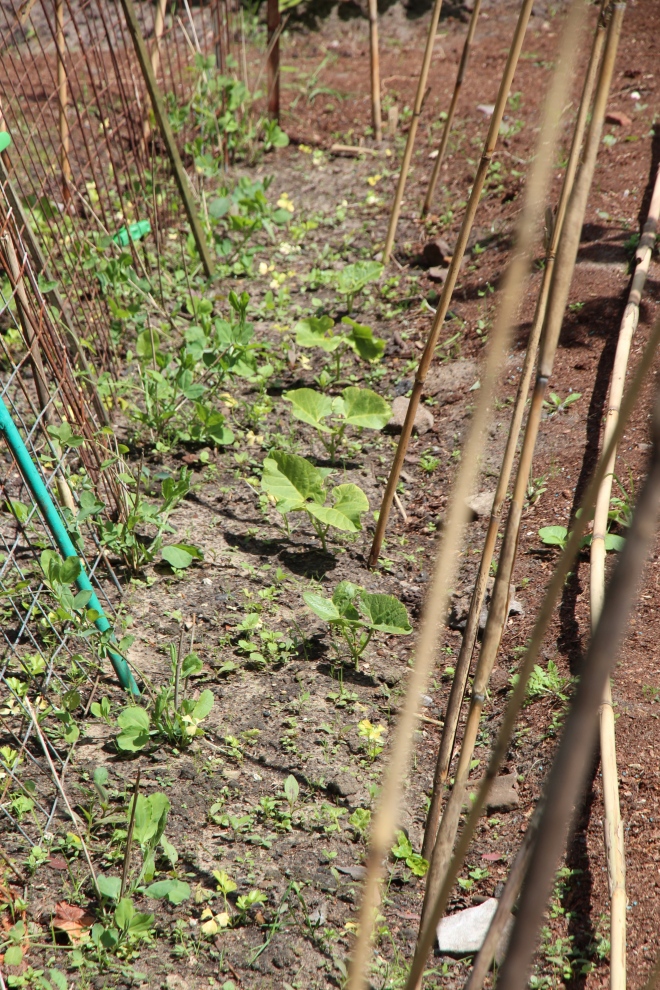
Sow your runner beans in trenches filled with well rotted manure and compost. Sow the seeds indoors in deep pots of compost (tall yoghurt pots are ideal) with compost in April-May 2.5cm (1″) deep. Water well and place in a warm position and make sure the beans get plenty of light when they germinate. When the frosts have finished, plant the beans out into the prepared trench 25cm (10″) apart. Keep watered and protected from wind or too much sun by shading them in horticultural fleece. While you plant the beans out, stick a pole, such as a bamboo pole, next to each bean. Encourage them to climb up it as they grow upwards. Or sow outdoors May-July where they are to crop, 5cm (2″) deep, directly into finely-prepared, well-cultivated, fertile soil, which has already been watered. We often do some of each (as we love beans) – we start off with some indoors and add more outside when the weather warms up.
Over winter, do not pull your bean roots up. Leave them in the ground and cover with layers of thick horticultural fleece. The next season, the roots should re-grow and give you an early harvest of beans. This year we harvested beans from the roots of beans that we planted three years ago!
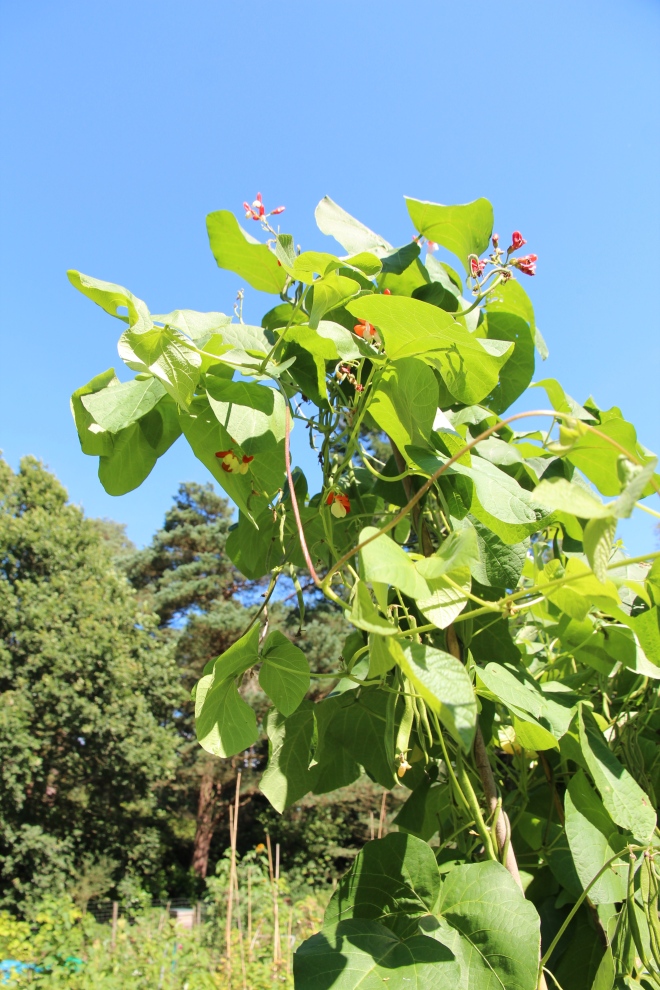
Harvest the beans July-October. Pick off the beans gently, trying not to damage the plant or the flowers (which will be pollinated by the bees and made into the beans themselves). Try not to leave the beans until they get too big. Once the plant believes that it has enough large beans formed, it stops trying to produce flowers and your harvest ultimately fails. At the height of bean picking, we are often harvesting craters worth of beans daily and have far too much to prepare.
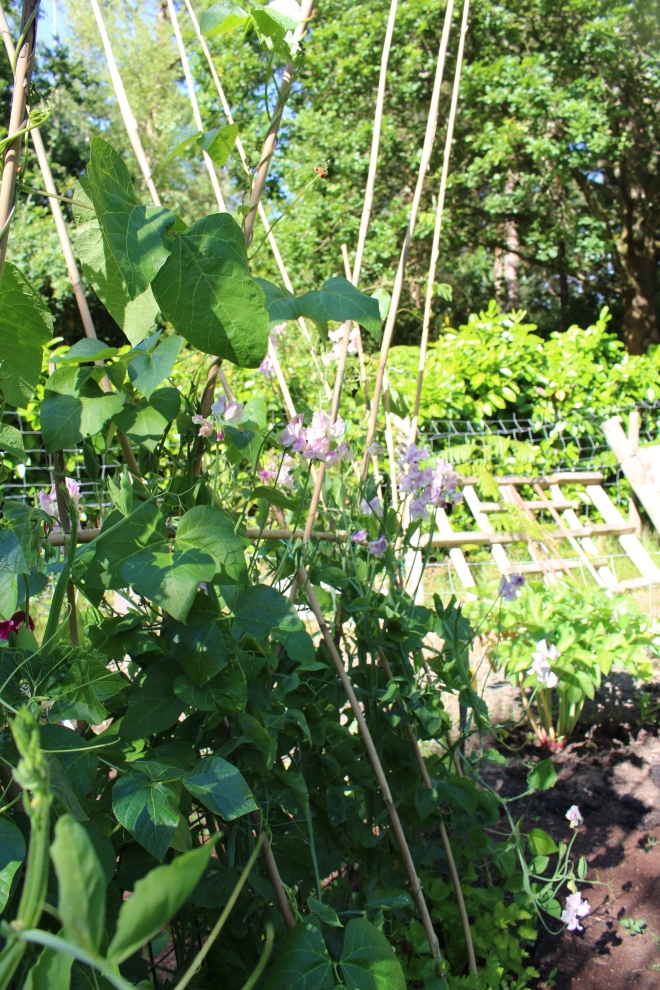
To prepare beans for eating, I like to remove the tops (I don’t bother with the tails), string them if needed (but I prefer to harvest them before they need stringing) and to slice them in the bean grinder we have in out kitchen. I’m sure they are easy to buy on the internet, and are so worth it.
To cook them, bring a large pan of water to the boil and add the beans, turning the heat down to low. Leave to simmer for about 5-8 minutes, remove from the heat and drain.
To freeze beans, dip the beans in the boiled water for less than a minute, remove and plunge into icy cold water. Once they are completely cold, seal in a plastic bag and store in the freezer. This way, we often eat homegrown runner beans still on Christmas day.
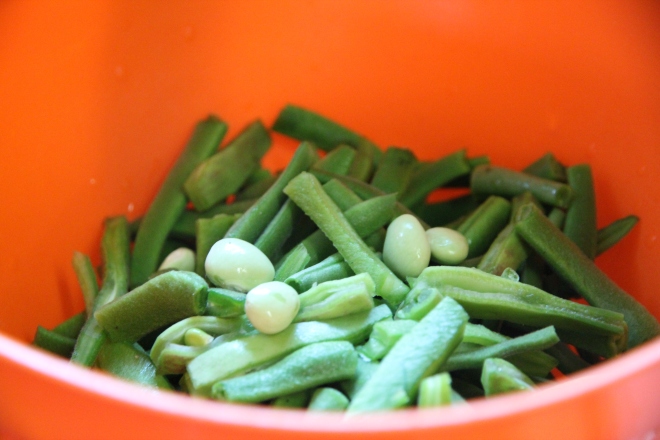
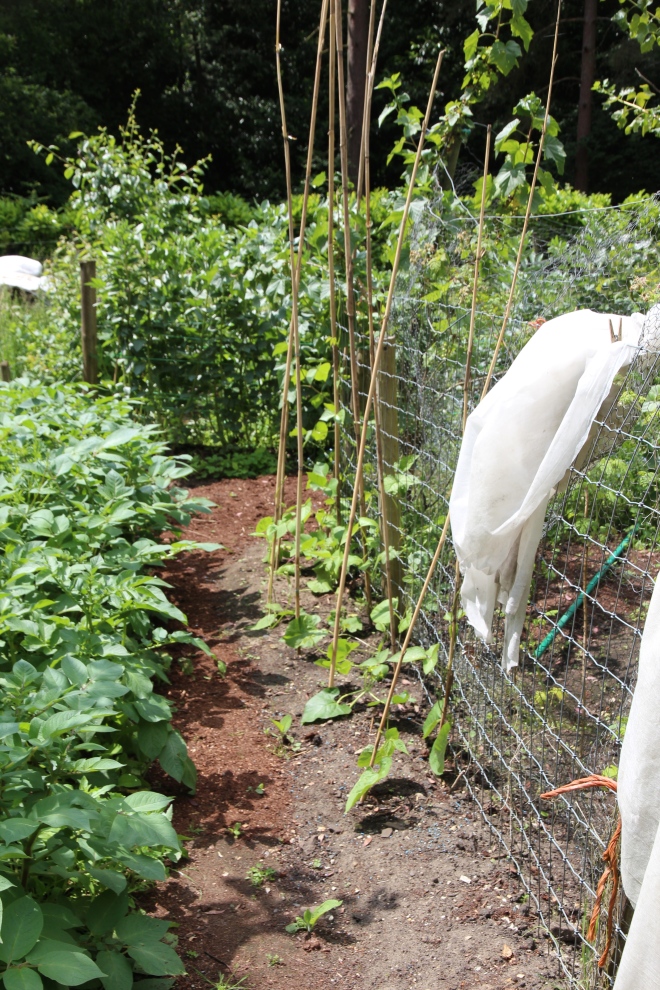
Variations of runner beans we have tried are: ‘Moonlight’, ‘St George’, ‘Firestorm’, ‘Wisley Magic’
They are all yummy. Growing your own beans is so much nicer than buying them from a supermarket. I remember loving runner beans from my gran when she used to grown them for us when I was little, before I every tried gardening. It was so disappointing to try them from the shop. If you ever try to grow something green, runner beans are so worth it.
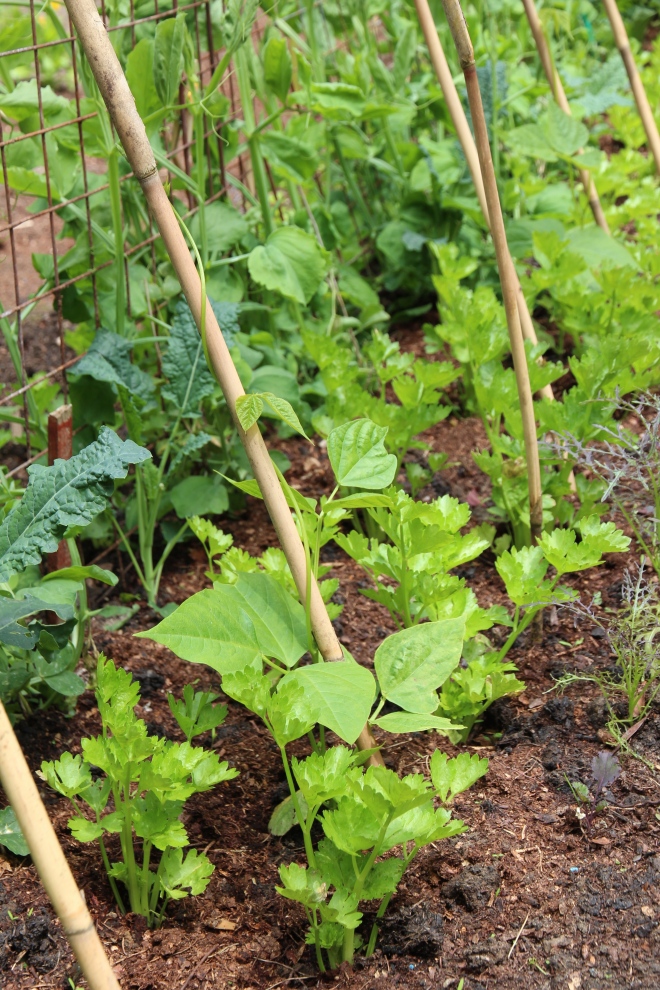
Runner beans contain vitamin K, folate, vitamin C and manganese. Legumes are a good source of fibre in general, and runner beans are no exception: 100 grams has 9 per cent of the daily RDA. And good fibre intake is essential for colon health, including maintaining healthy blood sugar and cholesterol levels. Runner beans are a great way to load up on vitamin A, with 28 per cent of your RDA in 100 grams. This essential nutrient is important for eye, skin, bone and tooth health. Lutein, zea-xanthin, and B-carotene are some of the antioxidants are found in runner beans. Zea-xantin is thought to be important for UV light-filtering functions in the eyes. The beans inside the runner bean pods can be cooked and eaten on their own. They’re a good source of vegetarian protein, 20g per 100g of dried beans.
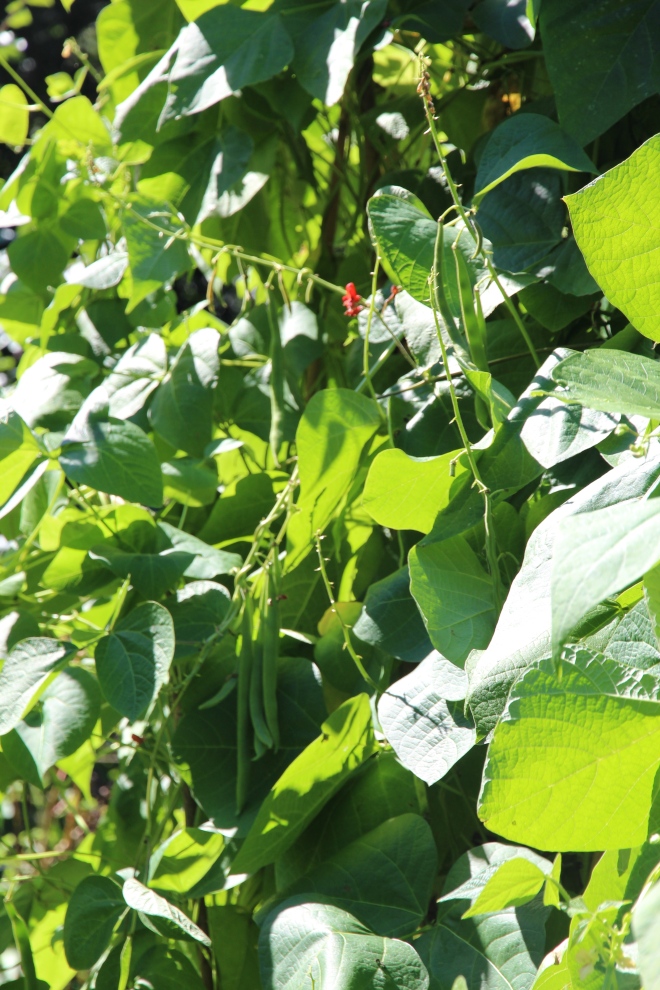
Here are some recipes to try runner beans with:
Raw runner beans dipped in homous.
Boiled or steamed runner beans dressed in the juice of one lemon and tossed in sesame seeds as a side dish.
Favourite dinner: baked potato, baked beans, cheese and runner beans – Beans Means Heinz
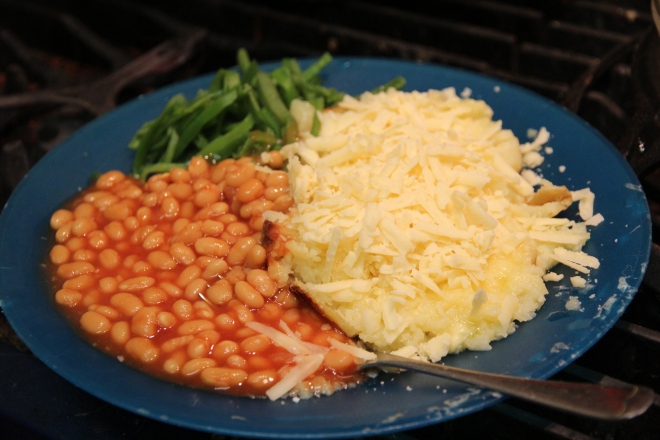
Eaten with your roast dinner, a cooked pasta dish, like bolognese or lasagne, with your potato and sausages, even as a side to pizza they are amazing.
Anything you would eat peas with, beans go very well with as an alternative.
I adore runner beans. If I ever had to grow one green vegetable in the garden, runner beans would be it!
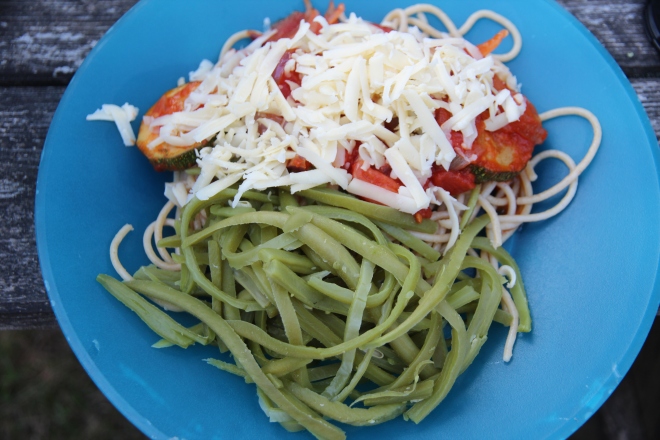
Recipe: Fried courgette-tomato sauce with spaghetti
